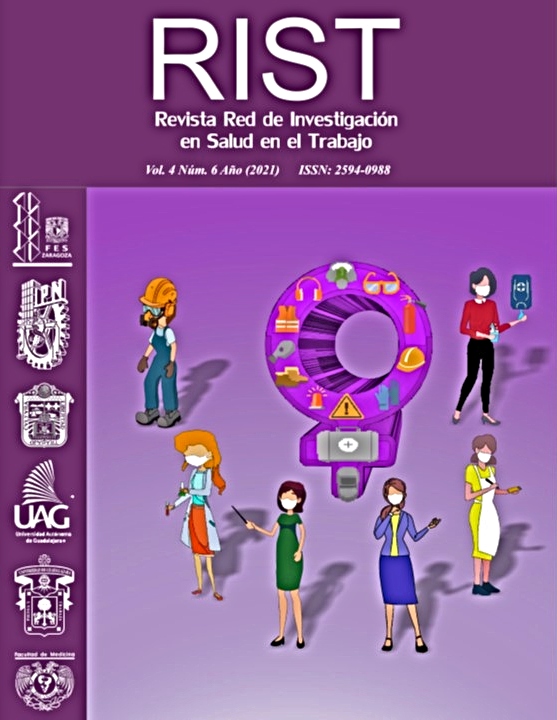Pathological and cognitive aspects in software developers related to video game addiction / Aspectos patológicos y cognitivos en desarrolladores de software relacionados a la adicción en videojuegos
Resumen
Introduction: This study´s objective was to design a scale to measure the software developer's addiction to video games and describe the highest percentages of cognitive-behavioral and pathological behaviors.
The study consisted of 101 male subjects whose ages ranged between 21 and 24 years. The volunteers answered a questionnaire designed to measure addiction to video games. The instrument has 10 items with a Likert score of 1 -5. We analyze the validity and reliability of the questionnaire. Our results indicate that the questionnaire is reliable and has a high internal consistency (Cronbach's alpha = 0.965).
Method: The study was correlational since pathological and cognitive aspects are related to the use of video games. Besides, we carried out an exploratory factor analysis with varimax rotation.
Results: From the factor analysis, we obtained that 53.4% of the subjects presented a high level of pathological characteristics— developers frequently get angry when playing, impacting the neglect of their activities. On the other hand, 46% show cognitive-behavioral characteristics— Developers find life boring without playing. Furthermore, we obtain a correlation of .651 between both factors. We found that pathological aspects (dimension 2) has a high correlation with the cognitive-behavioral issues (dimension 1).
Conclusions: In recent years, the number of Internet users has grown considerably. Furthermore, the use of online video games has become more popular among young people. We identified a significant correlation between cognitive and pathological characteristics presented by software developers. We found that the pathology in video game users is present and can affect its users emotionally and represent a high risk of developing an addiction due to the high score in both aspects.
##plugins.generic.usageStats.downloads##
Citas
Andrade Bustamante, A., & Moscoso Vanegas, J. (2018). Proyecto de investigación previo a la. Prevalencia y factores asociados de la adicción a los videojuegos en adolescentes. Cuenca, Cuenca, Ecuador.
Arias, O., Gallego, V., Rodríguez, M., & Del Pozo, M. (2012). Adicción a las nuevas tecnologías. Psicologia de las adicciones, 2-6.
Becoña Iglesias, E., & Oblitas Guadalupe, L. (2002). Adicciones y salud. psicologiacientifica.com.
Carbonell, X. (2014). La adicción a los videojuegos en el DSM-5. adicciones , 91-95.
Carbonell, X., Talarn, A., Beranuy, M., Oberst, U., & Graner, C. (2009). Cuando jugar seconvierte en un problema: el juego patológico y la adicción a los juegos de rol online. Aloma, 201-220.
Herrero, A. G. (2009). La convergencia de los videojuegos online y los mundos virtuales: situación actual y efectos sobre los usuarios. ZER Vol. 15, 118-131.
H. Cía, A. (2013). Las adicciones no relacionadas a sustancias (DSM-5, APA, 2013): Un primer paso hacia la inclusion de las adcciones conductuales en la clasificacion de categorias vigentes. Revista de Neuro-Psiquiatria, 210-217.
Juárez González, J. (2019). La huella del placer. De la regulacion a la adicción. México: El Manual Moderno.
Koizumi, K., Goss, L. (2005). Crecimiento, Productividad y Brecha Digital. Política Digital. Vol. 22, pp. 45-47.
Oliva Delgado, A., Hidalgo García, M. V., Moreno Rodríguez, C., Jiménez García, L., Jiménez Iglesias, A., Antolín Suárez, L., y otros. (2012). Uso y riesgo de adicciones a las nuevas tecnologías entre adolescentes y jóvenes andaluces. España: Agua clara, SL.
Reyes Hernández, K., Sánchez Chávez, N., Toledo Ramírez, M., Reyes Gómez, U., Reyes Hernández, D., & Reyes Hernández, U. (2014). Los videojuegos, ventajas y prejuicios para los niños. Revista mexicana de pediatria, 74-78.
Salas, J. (2017). La OMS reconoce el trastorno por videojuegos como problema mental. El pais.
Sánchez Vega, D. (Septiembre de 2015). Evolución historica y contexto social del videojuego en el sector audiovisual, reeproduccion, produccion y postulacion de un videojuego a traves del software libre profesional.
Terán Prieto, A. (2019). Ciberadicciones. Adicción a las nuevas Tecnologias. eapap, 131-141

Esta obra está bajo licencia internacional Creative Commons Reconocimiento-NoComercial-CompartirIgual 4.0.
Al proponer un trabajo para su publicación, los autores aceptan las condiciones contenidas en las presentes normas de la revista Red de Investigación en Salud en el Trabajo y conservan los derechos patrimoniales sobre el artículo en cuestión, a fin de que ésta lo edite, publique, reproduzca, difunda, comercialice, traduzca o autorice su traducción a cualquier idioma.
Los artículos aceptados serán publicados en la revista Red de Investigación en Salud en el Trabajo bajo una licencia de Creative Commons Reconocimiento-NoComercial-CompartirIgual 4.0 Internacional.
Los trabajos propuestos deberán ser originales e inéditos, y no podrán presentarse a ninguna otra revista mientras se encuentren sometidos a la consideración de la revista Red de Investigación en Salud en el Trabajo. También se reciben trabajos completos publicados previamente en forma de resumen, o trabajos no publicados presentados en congresos o seminarios.
Todos los trabajos serán publicados con pleno conocimiento de los autores.
Los artículos firmados son responsabilidad de los autores y no necesariamente reflejan la opinión de la revista, o de la institución a la que están afiliados los autores.















